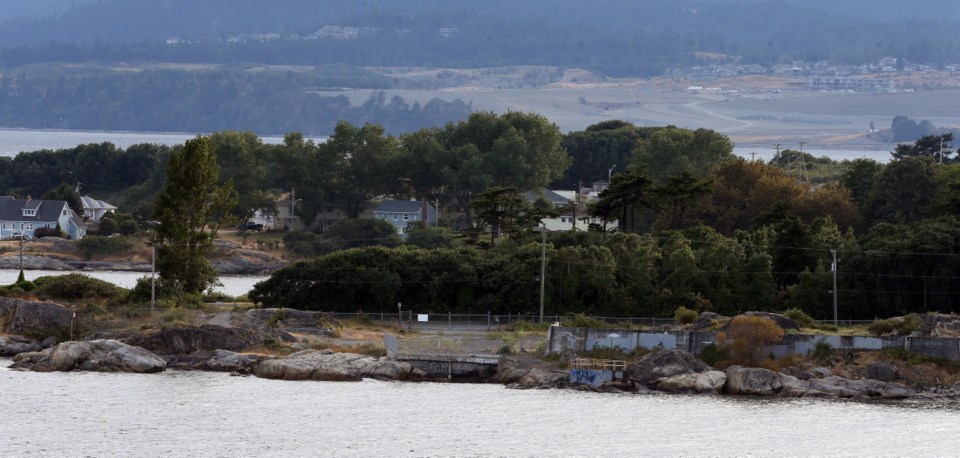Local taxpayers will have to dig deep to pay their yearly bill for sewage treatment if senior government grants are lost — something Oak Bay Mayor Nils Jensen worries is a real possibility.
The prospect of the capital region meeting a March 31 deadline for the first of three federal grants for treatment is “virtually impossible,” Jensen said.
Without the grants, the costs to homeowners are “very alarming,” he said.
“If this was a fire, it would be a seven-alarm fire. … These are very large numbers.”
For example, the annual costs for a homeowner in Oak Bay for the least-expensive treatment option of the five under consideration — a single plant at Rock Bay providing secondary treatment — would jump to $919 from the estimated $583 with the grants. If the most expensive option — seven plants spread around the region — were built, Esquimalt homeowners would see their bills go up $404 to $1,427.
The estimated per-household cost is determined by a formula that divides up the total project cost based on factors such as each municipality’s sewage flows and its proportional share of capital costs, including any additional trunk mains or pump stations needed.
Already working on a one-year extension, the Capital Regional District has until the end of March to submit a detailed plan for wastewater treatment or risk losing $83.4 million from federal Crown corporation PPP Canada. In addition to the PPP Canada grant, the federal government has committed $120 million from the Building Canada Fund and $50 million from the Canada Green Fund.
Victoria Mayor Lisa Helps, chairwoman of the CRD sewage committee, concedes that the potential costs to homeowners without the senior government money are “scary.”
She remains hopeful the grant deadline can be met, but concedes time is slipping away. “I don’t think there’s anyone around that table who is interested in risking those grants,” Helps said.
Still, directors have delayed going to the public for input, saying that there were too many unanswered questions. Westside politicians also wanted time to develop another option for consideration.
Those decisions effectively mean the March funding deadline can’t be met, Jensen said, and the region should be seeking another extension.
He worries that if the PPP Canada grant is lost, it will have a domino effect on the other grants.
Helps admits the PPP Canada grant is integral to the entire funding package.
“PPP Canada was the first funder that came to the table in 2012, and the other two federal funding pots came on board because PPP Canada was there. Then because the federal government was at the table, the province came to the table.
“So in a sense the PPP Canada funding is … the pot that’s holding it all together. That’s why it’s important,” Helps said.
The CRD was forced to abandon a plans to put a regional sewage-treatment plant at McLoughlin Point last year after Esquimalt, responding to residents’ opposition, refused to rezone the former gasoline-tank property for the plant.
Jensen notes that the cost of the current cheapest option — a single plant with full grants — is estimated to be double what homeowners would have paid had McLoughlin been approved.
Directors are now slated to look at treatment and siting options in mid-January and then take the options to the public for input before selecting one for submission. The region also has to get approval for an amendment to the liquid-waste management plan.
Despite the challenges, Helps remains positive.
“It’s tight and it’s getting tighter every moment, but I’m still optimistic we can get there,” she said.
The treatment options now under consideration are:
• One secondary treatment plant in Victoria’s Rock Bay area, for $1.031 billion.
• One tertiary treatment plant at Rock Bay, for $1.139 billion.
• Two plants, offering secondary and tertiary treatment, one in Rock Bay and one in Colwood, for $1.088 billion.
• Four plants — Rock Bay, Colwood, Esquimalt First Nation and East Saanich — offering secondary and tertiary treatment, for $1.195 billion.
• Seven plants — Rock Bay, Colwood, Esquimalt, East Saanich, View Royal, Langford and Saanich core — offering secondary and tertiary treatment for $1.348 billion.



